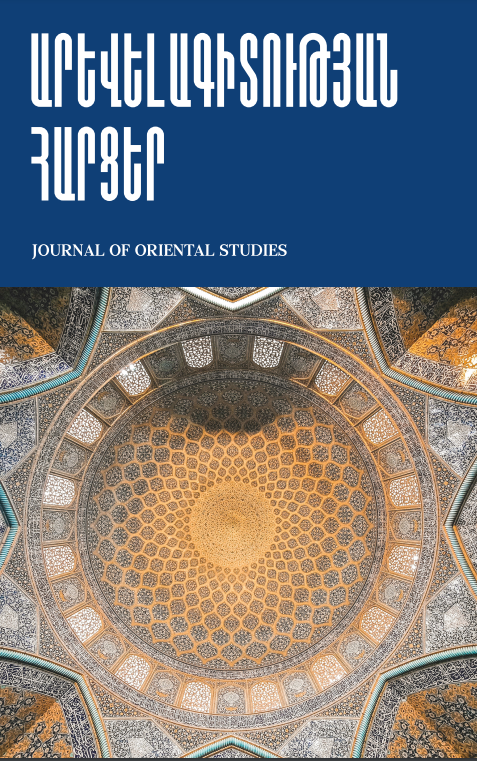MAIN CHARACTERISTICS OF TRANSLATION WORK ON THE EXAMPLE OF ARMENIAN AND AZERBAIJANI LANGUAGES
DOI:
https://doi.org/10.46991/jos.2024.25.1.141Keywords:
Translation, Armenian, Azerbaijani, Intercultural Communication, Vocabulary, Grammar, Dıctionary, Word Order, Media LiteracyAbstract
In the framework of professional communication, the concept of translation is characterized as interlingual and intercultural mediation, a type of communication in oral and written format, during which the content of the text is presented in another language, and the degree of relevance and accuracy of the translation largely depends on the problem faced by the translator. During translation, there is not only contact between two languages, but also between two cultures. From this point of view, the interaction between Armenian and Azerbaijani is unique in its nature, taking into account the unfriendly relations between the peoples who speak these languages, to put it mildly. In that context, it is important to state that the differences between the two languages require greater professionalism from the translator to perform high-quality, high-level translation work. The purpose of this work is to show the methods and means, thanks to which the translator will more easily fulfill the task before him and overcome the problems and difficulties that arise during the work. Linguistics also plays an important role in translation, and mastering the nuances of linguistics in both languages is also very important in translation. Despite the above-mentioned differences, nevertheless, in various fields, particularly in the information field, specialists often perform appropriate translations from Azerbaijani to Armenian and from Armenian to Azerbaijani both in written and oral formats. Considering that this work is the first attempt of a comparative study between two languages in the field of translation, a neutral reference to the problems that appear during similar translation works will help specialists in organizing their work more efficiently and qualitatively. Despite the differences between the two languages, the work highlighted the main common features and patterns that will help to perform the translation work faster, more competently and in accordance with the accepted standards.
References
Աբեղյան Մ., Հայոց լեզվի տեսություն, Ե., 1965:
Աբրահամյան Ս. Գ., Հայերենի կետադրություն. ուսումնականձեռնարկ։ Երեւան, 1999:
Մեդիա iգիտություն, ուսումնական ձեռնարկ դասավանդողների համար, Մեդիա նախաձեռնությունների կենտրոն, Երեւան 2022:
Бархударов Л. С., Язык и перевод (вопросы общей и частной теории перевода). М., 1975.
Илюшкина, М. Ю., Теория перевода: основные понятия и проблемы (учеб. пособие). Изд-во Урал. ун-та, 2015.
http://lib.ysu.am/disciplines_bk/ef64bea20d2eb6d0a2b29d948d43ad8d.pdf (մուտքի ամսաթիվ՝ 15.06.2023).
Комиссаров В. Н., Теория перевода (лингвистические аспекты). М., 1990.
Мунен Ж., Вопросы теории перевода в зарубежной лингвистике. М.,1978.
Умерова М. В., Особенности перевода документов и текстов офи-циального характера. Актуальные проблемы гуманитарных и естественныхнаук. No 12, 2011.
Феодоров А. В., Основы общей теории перевода (лингвистические проблемы). М.-СПб, 2002.
Шимановская Л.А., Современные теории перевода и их использование в работе с англоязычной научной статьей биотехнологического профиля. Вестник Казанского технологического университета, 2012.
Ширалиев М.Ш., Севортян Э.В., Грамматика азербайджанского языка (фонетика, морфология и синтаксис). Баку, 1971.
Ə.Abdullaev, Y.Seyidov, A.Həsənov, Müasir Azərbaycan dili, sintakis Dördüncü hissə. B., Şərq-Qərb, 2007.
Hüseynoğlu S., Dilimiz milli sərvətimiz. Bakı, 2018.
Hüseynova L., Azərbaycan dilində lüğətlərin təsnifi və lüğətçiliyin inkişaf tarixi, https://cyberleninka.ru/article/n/az-rbaycan-dilind-l-tl-rin-t-snifi-v-l-t-iliyin-inki-af-tarixi/viewer (մուտքի ամսաթիվ՝15.06.2023).
Downloads
Published
How to Cite
Issue
Section
License
Copyright (c) 2024 Lilit Movsisyan

This work is licensed under a Creative Commons Attribution-NonCommercial 4.0 International License.
Authors will be entitled in ownership of the copyright for their publications.
Permitted third party reuse is defined by the following user license:
Creative Commons Attribution-Non-Commercial (CC BY-NC). CC BY-NC allows users to
copy and distribute the article, provided this is not done for commercial purposes. The users may
adapt – remix, transform, and build upon the material giving appropriate credit, providing a link
to the license. The full details of the license are available
at https://creativecommons.org/licenses/by-nc/4.0/.
Under this license, authors retain ownership of the copyright for their publications, but
grant Journal of Օriental Studies and Yerevan State University
Publishing house a non-exclusive license to publish the work in paper and electronic form and
allow anyone to reuse, distribute and reproduce the content as long as the original work is
properly cited. Appropriate attribution can be provided by simply citing the original work. No
permission is required from the authors or the publishers.

